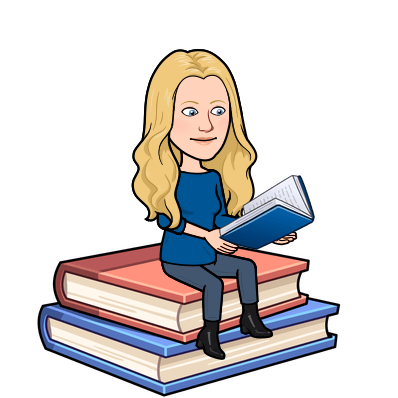Publishers: how to approach proofreading a book for a publisher
- alisonproofreader

- Mar 27, 2020
- 4 min read
Updated: Nov 4, 2020


Publishers: how to approach proofreading a book for a publisher
“A reader lives a thousand lives before he dies . . . The man who never reads lives only one.” – George R.R. Martin
I love reading books and what a better way to earn a living than reading books for publishers. So here are my top tips for how I approach proofreading.
Style Guides
Layout
Content
Proofreading my comments
Style Guides
Publishers provide their style guide before you start to proofread their book, which I think is a wonderful thing. I love lists and working through projects methodically. So I begin every new proofreading project by familiarising myself with the style guide. It is like getting to know a new friend, finding out what they like and don't like. So I use the guide as a list and work my way through each point. I either make notes of specific things to look for when reading the book or use the search option to find that point in the book. For example, if the style guide states they use single quotation marks and not double, I use the search option to find them and mark them up to be changed. In a PDF, Adobe has a magnifying glass at the top of the screen, which allows you to search for items in the document. In Microsoft Word, I use the search box in the top right corner, or you can use 'find and replace'. I find this the quickest way to find specific changes I need to make. Now I feel I know what I am looking for, I begin.
Layout
I begin with an overview of the whole book; again this helps me to become more familiar with the book. I don't just dive straight in as I would when reading for pleasure. I slowly get to know the book looking at every detail. So I look through the book checking page numbers follow on, headers and footers match on each page, titles and paragraph indentation are consistent, and the layout of images and text is accurate. If it is a non-fiction book, I cross-reference the contents list checking every page and text matches. Now I feel I know the book better I begin the reading.
Content
I have my notes from the style guide next to me and begin the process of reading every word from the beginning to the end of the book. My mind is very analytical, and I slowly check for understanding, spellings, grammar and punctuation. I find reading aloud helps me to focus on every word. Through my training with the Chartered Institute of Editing and Proofreading, I know common mistakes to look for and keep them in mind whilst proofreading. For example, easily mixed up words, practise and practice. I mark up each change digitally using either commenting tools or Track changes in Microsoft Word or Adobe Acrobat or marking up on paper copies using BSI proofreading symbols.
As I proofread a large book at first, I go very slowly as I am learning how the author likes to write and check every detail. It is like meeting a new friend and asking lots of questions to get to know them. But as I continue through the book, I get faster at proofreading as I feel I know the author and know their style. I get a feel for how they write and what decisions they have made through the process of writing. Like in a friendship, as it develops I don't need to ask them if they like the TV series Friends, I just need to point out that it is on TV at 5 pm tonight and would they like to watch it. With a background in education and a love of learning, I like to be supportive with my comments. As I mark up the changes, I write explanations of why I would change it to support writers and improve their writing. I love teaching others and empowering them with knowledge. I also keep a query list of items I would like to suggest reviewing.
Proofreading my comments
When I get to the end of the book, I like to go back to the beginning and start all over again. I find reading the book the first time is where I get to know the author and my new friend. When I start again at the beginning, it is like catching up with an old friend and having a quick catch up to ensure they are all right. I know what they like and how they write and sometimes spot things at the beginning that I did not notice at first when I didn't know them as well as I do now. So one last check through helps me consolidate the friendship and ensure everything is in place, accurate and ready for publication. I also check through my proofreading comments, checking my own spellings, nothing worse than a proofreader who can't write. Sometimes as I get to the end and know the author better, I change my mind about some of my earlier comments as I know them better. But I do believe in being thorough and marking up every inconsistency. It is the author's job to decide what they prefer in the final book and my job to guide them.
I love my job; I get to read all day, support others and pass on my love of learning.
“Reading for me is spending time with a friend.” – Gary Paulsen
I am a freelance proofreader and a qualified teacher with a love of learning, feel free to contact me if you need support with your writing.
Thank you for reading 'Proofreading: how to approach proofreading a book for a publisher'. Want to find more out about how much does proofreading cost?
Check out my blog "Proofreading: how much does proofreading cost?" on my website www.alisonproofreader.com, or say hello on Twitter at @alisonproofread, or Instagram at @alisonproofreader, or connect via Facebook and LinkedIn.










Comments